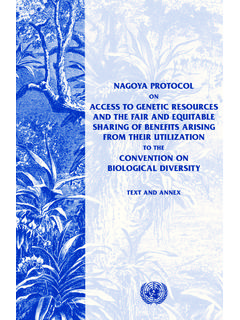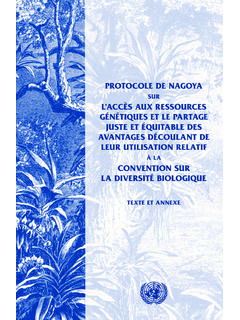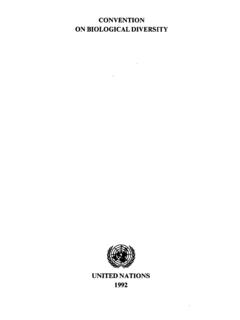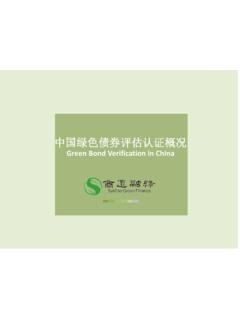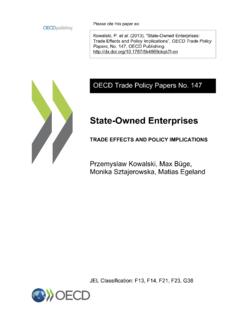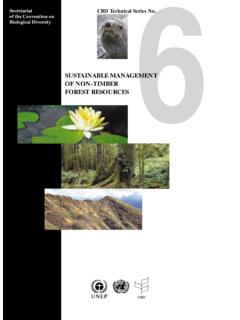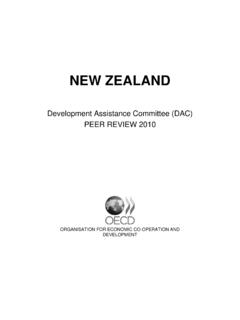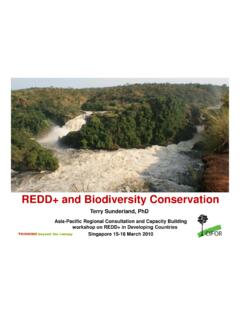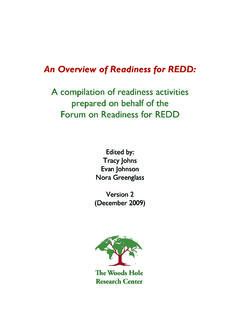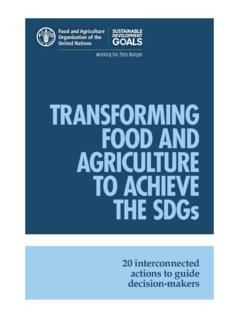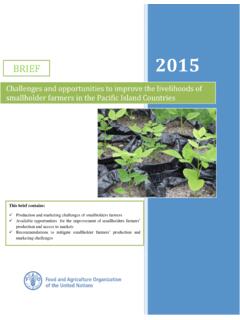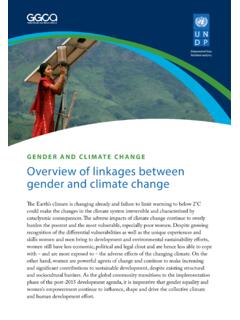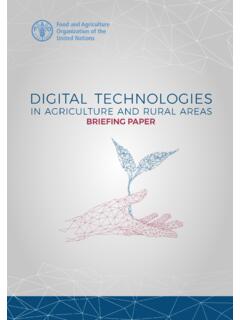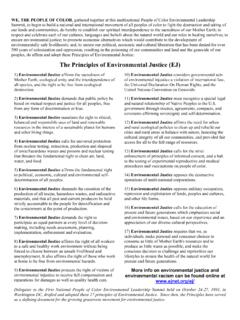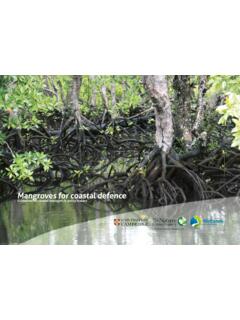Transcription of BIODIVERSITY AND THE 2030 AGENDA FOR SUSTAINABLE …
1 Empowered lives. Resilient nations. BIODIVERSITY AND THE 2030 agenda for sustainable DEVELOPMENTT echnical Note1 BIODIVERSITY IS ESSENTIAL FOR SUSTAINABLE DEVELOPMENTThe 2030 agenda for sustainable Development, agreed by the 193 States Members of the United Nations, sets out an ambitious framework of universal and indivisible goals and targets to address a range of global societal challenges. BIODIVERSITY and ecosystems feature prominently across many of the SUSTAINABLE Development Goals (SDGs) and associated targets. They contribute directly to human well-being and development priorities. BIODIVERSITY is at the centre of many economic activities, particularly those related to crop and livestock agriculture, forestry, and fisheries. Globally, nearly half of the human population is directly dependent on natural resources for its livelihood, and many of the most vulnerable people depend directly on BIODIVERSITY to fulfil their daily subsistence needs.
2 IMPLEMENTATION OF THE STRATEGIC PLAN FOR BIODIVERSITY 2011-2020 CONTRIBUTES TO THE ACHIEVEMENT OF THE SDGS The Strategic Plan for BIODIVERSITY 2011-2020 and its Aichi BIODIVERSITY Targets adopted under the Convention on Biological Diversity has been recognized as setting the global framework for priority actions on BIODIVERSITY . The 2030 AGENDA is consistent with other existing international commitments, including the Strategic Plan for BIODIVERSITY . The SDGs and the Strategic Plan are mutually supportive and reinforcing, and therefore the implementation of one contributes to the achievement of the other. THE PURPOSE OF THIS TECHNICAL NOTEThe present note is developed as a technical complement to the Policy Brief on BIODIVERSITY and the 2030 agenda for sustainable Development.
3 It is intended to help decision-makers such as government representatives and development professionals to understand more easily the contributions of BIODIVERSITY to achieving the SDGs. It presents a mapping of the linkages between the SDGs, and the Strategic Plan for BIODIVERSITY 2011-2020 and its 20 Aichi BIODIVERSITY table on the following page offers a summary of linkages between SDGs and Aichi BIODIVERSITY Targets. The rest of the publication provides a more detailed description of the linkages between BIODIVERSITY and specific SDGs and their associated targets, and also provides a cross-reference to the Aichi BIODIVERSITY publication illustrates the most direct linkages between the targets for the SDGs and BIODIVERSITY .
4 However, it should be noted that BIODIVERSITY may also indirectly contribute to the achievement of other targets not analysed in this of linkages between SDGs and Aichi BIODIVERSITY TargetsSustainable Development GoalRelevant Aichi BIODIVERSITY Target*1. End poverty in all its forms everywhere2, 6, 7, 142. End hunger, achieve food security and improved nutrition and promote SUSTAINABLE agriculture4, 6, 7, 13, 18 3. Ensure healthy lives and promote well-being for all at all ages8, 13, 14, 16, 184. Ensure inclusive and equitable quality education and promote lifelong learning opportunities for all1, 195. Achieve gender equality and empower all women and girls14, 17, 186. Ensure the availability and SUSTAINABLE management of water and sanitation for all8, 11, 14, 157.
5 Ensure access to affordable, reliable, SUSTAINABLE and modern energy for all5, 7, 14, 15, 198. Promote sustained, inclusive and SUSTAINABLE economic growth, full and productive employment and decent work for all2, 4, 6, 7, 14, 169. Build resilient infrastructure, promote inclusive and SUSTAINABLE industrialization and foster innovation2, 4, 8, 14, 15, 1910. Reduce inequality within and among countries8, 15, 18, 2011. Make cities and human settlements inclusive, safe, resilient and sustainable2, 4, 8, 11, 14, 1512. Ensure SUSTAINABLE consumption and production patterns1, 4, 6, 7, 8, 1913. Take urgent action to combat climate change and its impacts2, 5, 10, 14, 15, 1714. Conserve and sustainably use the oceans, seas and marine resources for SUSTAINABLE development2, 3, 4, 5, 6, 7, 8, 10, 11, 12, 14, 15, 17, 1915.
6 Protect, restore and promote SUSTAINABLE use of terrestrial ecosystems, sustainably manage forests, combat desertification and halt and reverse land degradation and halt BIODIVERSITY loss2, 4, 5, 7, 9, 11, 12, 14, 15, 1616. Promote peaceful and inclusive societies for SUSTAINABLE development, provide access to justice for all and build effective, accountable and inclusive institutions at all levels1717. Strengthen the means of implementation and revitalize the global partnership for SUSTAINABLE development2, 17, 19, 20 Overview of Aichi BIODIVERSITY TargetsAwareness of BIODIVERSITY increasedInvasive alien species prevented and controlledBiodiversity values integratedEcosystems vulnerable to climate changeIncentives reformedProtected AreasSustainable production and consumptionReducing risk of extinctionSustainable agriculture.
7 Aquaculture and forestryEcosystem restoration and resilienceSharing information and knowlegePollution reducedAccess to and sharing benefits from genetic resourcesMobilizing resources from all sourcesHabitat loss halved or reducedSafeguarding genetic diversityBiodiversity strategies and action plansSustainable management of aquatic living sourcesEcosystem servicesTraditional knowledge* The complete wording of the Aichi BIODIVERSITY Targets is contained in the 1: END POVERTY IN ALL ITS FORMS EVERYWHERES ustainable Development TargetsRelevant Aichi BIODIVERSITY By 2030, ensure that all men and women, in particular the poor and the vulnerable, have equal rights to economic resources, as well as access to basic services, ownership and control over land and other forms of property, inheritance, natural resources, appropriate new technology and financial services, including microfinance 2, 6, By 2030, build the resilience of the poor and those in vulnerable situations and reduce their exposure and vulnerability to climate-related extreme events and other economic, social and environmental shocks and disastersNote.
8 SDG Target explicitly calls for integration of ecosystems and BIODIVERSITY values into national and local planning, development processes and poverty reduction strategies and accounts by , 6, 7, 14 Contributions of BIODIVERSITY to the achievement of Goal 1 BIODIVERSITY and healthy ecosystems provide the essential resources and ecosystem services that directly support a range of economic activities, such as agriculture, forestry, fisheries and tourism. Subsistence and small-scale agriculture and fisheries provide livelihoods for many of the world s rural poor. Ecosystem services and other non-marketed goods are estimated to make up between 50% and 90% of the total source of livelihoods among poor rural and forest-dwelling households the so-called GDP of the poor .The conservation and SUSTAINABLE use of BIODIVERSITY , including through SUSTAINABLE agriculture based on ecosystem approaches, along with the restoration and safeguarding of ecosystems and the valuable services they provide, can help to prevent men and women from falling into poverty and can help to lift them out of it by increasing their income and reducing their vulnerability to external economic shocks or environmental disasters.
9 Relevant Aichi BIODIVERSITY Targets: BIODIVERSITY values integratedSustainable agriculture, aquaculture and forestrySustainable management of aquatic living sourcesEcosystem services4 GOAL 2: END HUNGER, ACHIEVE FOOD SECURITY AND IMPROVED NUTRITION AND PROMOTE SUSTAINABLE AGRICULTURES ustainable Development TargetsRelevant Aichi BIODIVERSITY By 2030, end hunger and ensure access by all people, in particular the poor and people in vulnerable situations, including infants, to safe, nutritious and sufficient food all year round6, 7, By 2030, end all forms of malnutrition, including achieving, by 2025, the internationally agreed targets on stunting and wasting in children under 5 years of age, and address the nutritional needs of adolescent girls, pregnant and lactating women and older persons6, 7, By 2030, double the agricultural productivity and incomes of small-scale food producers, in particular women, indigenous peoples, family farmers, pastoralists and fishers.
10 Including through secure and equal access to land, other productive resources and inputs, knowledge, financial services, markets and opportunities for value addition and non-farm employment7 By 2030, ensure SUSTAINABLE food production systems and implement resilient agricultural practices that increase productivity and production, that help maintain ecosystems, that strengthen capacity for adaptation to climate change, extreme weather, drought, flooding and other disasters and that progressively improve land and soil quality4, By 2020, maintain the genetic diversity of seeds, cultivated plants and farmed and domesticated animals and their related wild species, including through soundly managed and diversified seed and plant banks at the national, regional and international levels, and promote access to and fair and equitable sharing of benefits arising from the utilization of genetic resources and associated traditional knowledge, as internationally agreed 13, 18 Contributions of BIODIVERSITY to the achievement of Goal 2 BIODIVERSITY is a key factor for the achievement of food security and improved nutrition.
